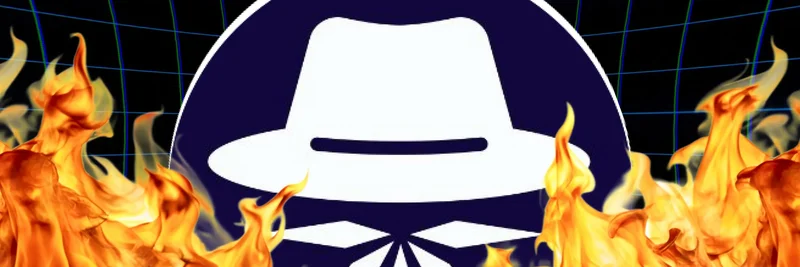If you’re into the wild world of cryptocurrency, you’ve probably heard buzz about token burns and how they can shake up a coin’s value. The latest chatter on X comes from BSCNews, who dropped a fiery post about the $ION token burns on the Ice Blockchain. Posted at 09:44 UTC on August 6, 2025, this tweet dives into how $ION is powering a deflationary economy across more than 20 blockchains. Let’s break it down and see what’s cooking!
What’s the Hype About $ION Token Burns?
The image in the tweet says it all—a sleek hat logo surrounded by flames, symbolizing the burning of tokens to heat up value. Token burning is like a controlled fire in the crypto world: projects intentionally remove tokens from circulation by sending them to a “burn address” (a wallet that no one can access). For $ION, this process is tied to the Ice Open Network, a Layer-1 blockchain designed for speed and scalability. The goal? Reduce supply to boost demand and, hopefully, the token’s price.
According to the linked article on BSCN, Ice Open Network rolled out upgraded tokenomics in April 2025, shifting $ION’s value from speculation to real-world usage. This is a big deal because it means every interaction on the network—tipping creators, boosting posts, or even watching ads—can trigger a burn. Pretty cool, right?
How Does It Work Across 20+ Blockchains?
Here’s where $ION gets interesting. The ION Framework is a toolkit that lets decentralized apps (dApps) run on major blockchains like Bitcoin, Ethereum, BNB Chain, Solana, and Polygon. This “chain-agnostic” approach means $ION burns aren’t limited to one network. Whether you’re gaming on Solana or trading on Ethereum, the framework ties it all together.
The mechanics are simple yet clever. When you perform a fee-based action (like tipping a streamer), 50% of the fee burns the project’s native token, while the other 50% goes to the ION Ecosystem Pool to reward creators and nodes. This dual-burn system makes $ION scarcer while supporting the broader network. Imagine a gaming dApp on Solana where every tip reduces the token supply—talk about a win-win!
Why a Deflationary Economy Matters
So, why should you care about a deflationary economy? In traditional finance, inflation erodes money’s value over time. With $ION, the opposite happens: as tokens get burned, the supply shrinks, potentially increasing its intrinsic value. Think of it like a rare collectible—fewer items mean higher demand. The web results back this up, noting that deflationary cryptocurrencies like Bitcoin thrive long-term because of their limited supply.
For $ION, this deflation kicks in with every user action across those 20+ blockchains. The more people use dApps built with the ION Framework, the more tokens burn, creating a self-sustaining cycle. It’s a bold move to challenge centralized platforms by putting economic control back in users’ hands.
Real-World Example: Gaming on Solana
Let’s paint a picture. Say you’re playing a hot new game on Solana with a social dApp powered by the ION Framework. You tip your favorite streamer $5 worth of the game’s token. Half of that fee burns the game’s token, reducing its supply, while the other half feeds the ION Ecosystem Pool, earning you rewards in $ION. The game gets more engaging, its token value might rise, and you benefit too. This example, straight from the BSCN article, shows how $ION scales beyond its native chain.
What’s Next for $ION?
The future looks bright for $ION, especially with Online+, Ice Open Network’s decentralized social media platform, nearing its public launch with over 70 partnerships. Staking features are also on the horizon, which could drive even more demand. As usage grows across blockchains, the deflationary pressure on $ION could turn it into a Web3 powerhouse.
If you’re a meme coin enthusiast or a blockchain newbie, keep an eye on this space. The X thread sparked some wild reactions—like a user hyping $SAINT, another memecoin with a soul—but $ION’s real-world utility sets it apart. Check out the full BSCN article for the deep dive, and let us know what you think in the comments!


